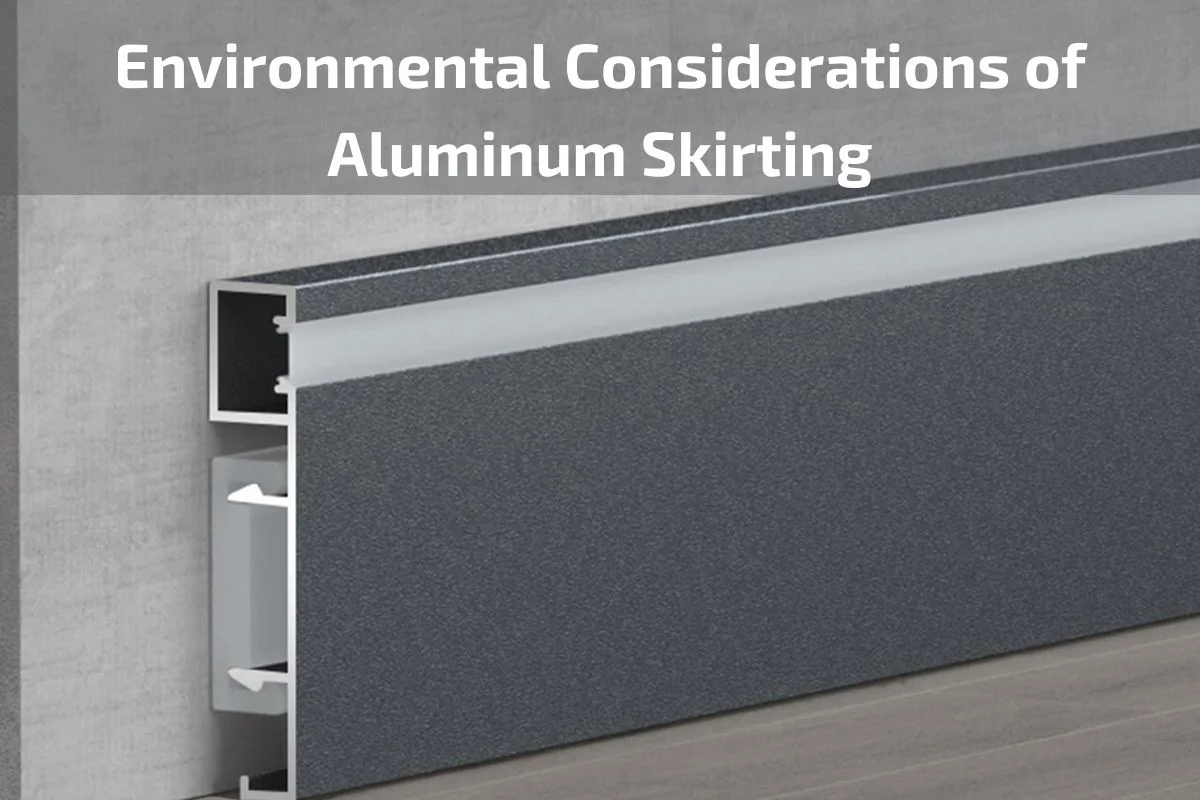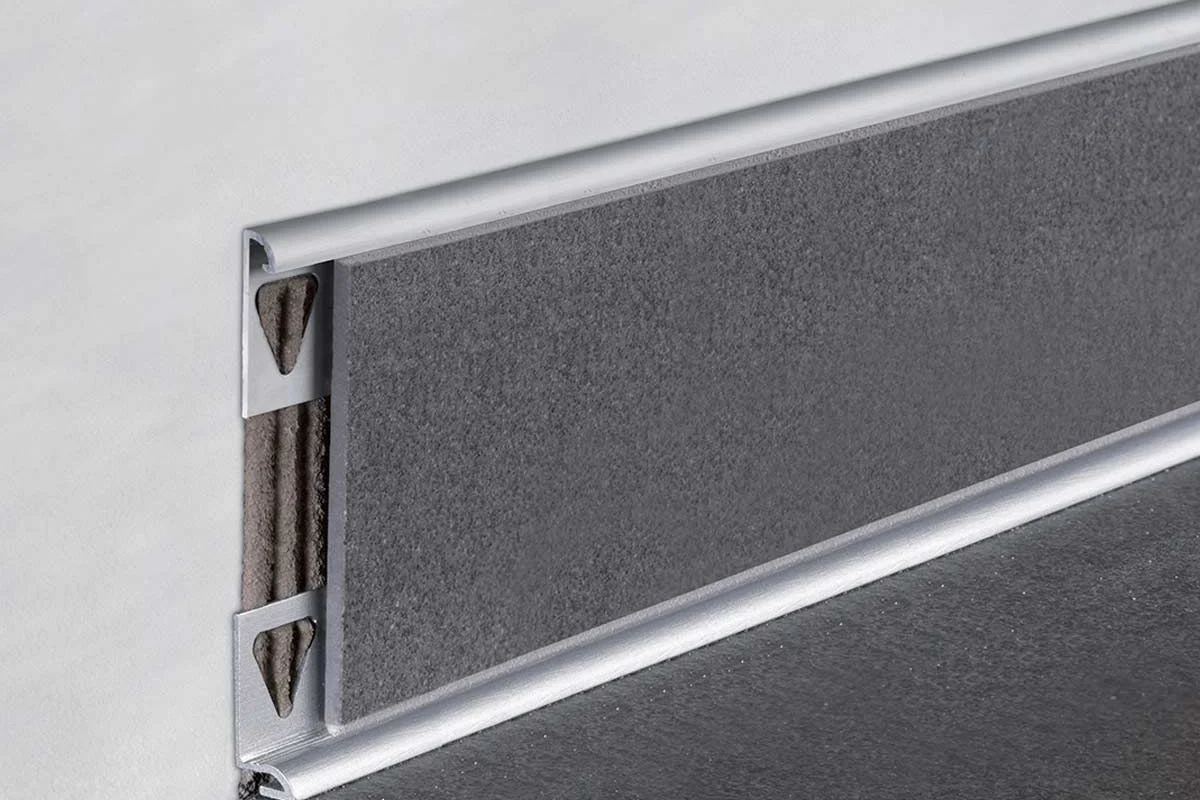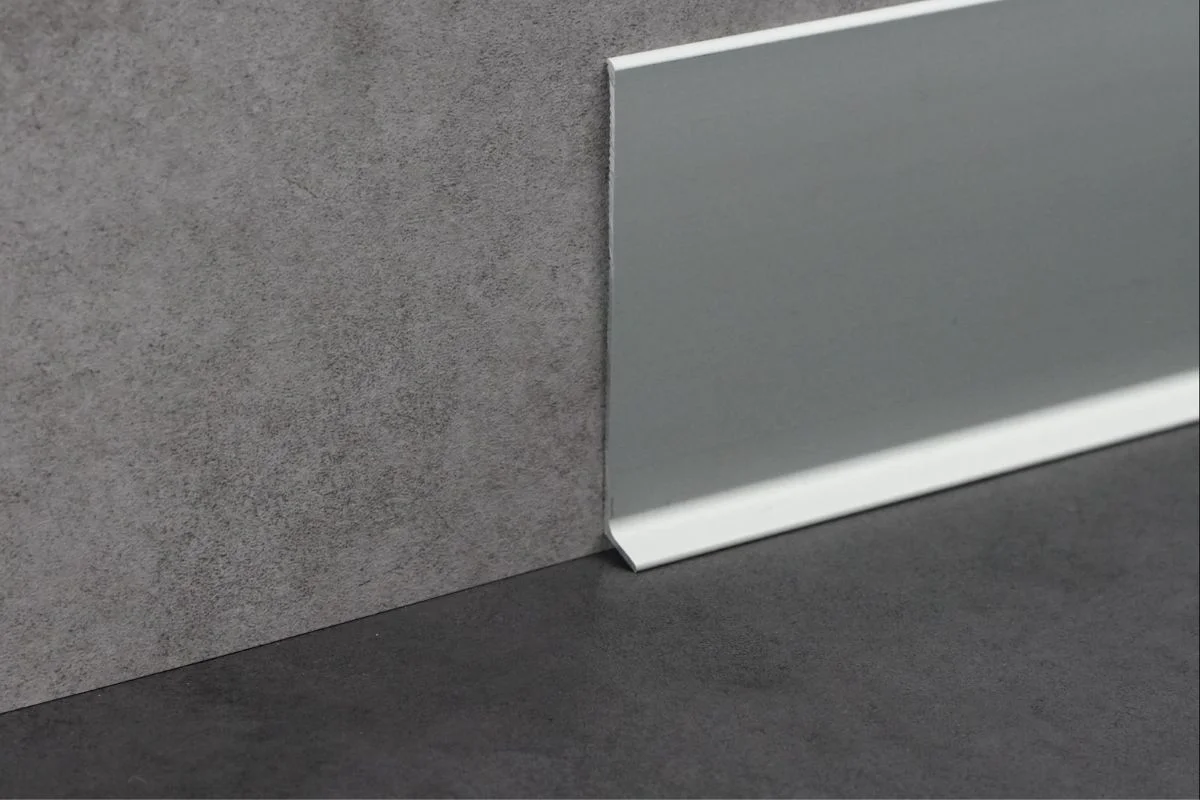
Environmental Considerations of Aluminum Skirting
As sustainability and environmental consciousness become increasingly important factors in modern design and construction, it’s essential to examine the environmental considerations of materials used in interior design elements such as aluminum skirting. While aluminum is known for its durability and versatility, understanding its environmental impact is crucial for making informed decisions in architectural and design projects.
In this section, we explore the environmental aspects of aluminum skirting, including its production process, recyclability, energy efficiency, and potential ecological benefits and challenges. By evaluating these factors, designers, architects, and homeowners can make environmentally responsible choices when incorporating aluminum skirting into their interior spaces.
Brief overview of aluminum skirting
Aluminum skirting, a versatile and durable trim used in interior design and construction, offers numerous benefits for both residential and commercial spaces. This sleek and modern material serves as a protective barrier along the base of walls, providing a finished look while also offering practical functionality. Aluminum skirting is renowned for its lightweight nature, corrosion resistance, and ability to withstand wear and tear in high-traffic areas. Its popularity stems from its sleek appearance, ease of maintenance, and suitability for various design styles. As a key component in interior finishing, aluminum skirting plays a vital role in enhancing the aesthetic appeal and durability of spaces while offering practical solutions for concealing wires, gaps, and uneven edges.
Definition and purpose of aluminum skirting
Aluminum skirting, also known as aluminum baseboard or aluminum trim, is a type of protective molding installed along the bottom edge of interior walls where they meet the floor. It serves both functional and aesthetic purposes in residential, commercial, and industrial settings.
Definition: Aluminum skirting is typically made from extruded aluminum, a lightweight and durable material known for its corrosion resistance and structural integrity. It comes in various profiles, sizes, and finishes to accommodate different interior design styles and architectural preferences.
Purpose:
- Protection: One of the primary purposes of aluminum skirting is to protect the bottom portion of walls from damage caused by furniture, vacuum cleaners, foot traffic, and other sources. By creating a barrier between the wall and the floor, aluminum skirting helps prevent chips, scratches, and dents, thereby preserving the integrity of the wall surface.
- Concealment: Aluminum skirting conceals gaps, cracks, and imperfections along the junction between the wall and the floor, providing a seamless and polished appearance to the room. It covers uneven edges, wiring, and expansion gaps, enhancing the overall aesthetic appeal of the space.
- Durability: Aluminum skirting offers exceptional durability and longevity, making it suitable for use in high-traffic areas where wear and tear are common. Unlike other materials, aluminum is resistant to corrosion, moisture, and temperature fluctuations, ensuring that the skirting maintains its structural integrity over time.
- Easy Maintenance: Aluminum skirting is easy to clean and maintain, requiring only periodic dusting or wiping with a damp cloth to remove dirt and debris. Unlike wood skirting, aluminum does not warp, rot, or require refinishing, making it a low-maintenance option for interior spaces.
- Modern Aesthetic: Aluminum skirting adds a sleek and modern touch to interior design, complementing contemporary architectural styles and minimalist aesthetics. Its clean lines, smooth surface, and metallic finish contribute to a polished and sophisticated look, enhancing the overall visual appeal of the room.
Environmental Benefits of Aluminum Skirting
Aluminum skirting not only offers functional and aesthetic advantages but also presents several environmental benefits that make it an eco-friendly choice for interior design and construction projects. Here are some key environmental benefits of aluminum skirting:
- Sustainable Material: Aluminum is a highly sustainable material that can be recycled repeatedly without losing its inherent properties. Unlike many other building materials, aluminum retains its quality and integrity through the recycling process, making it a valuable resource in a circular economy. By choosing aluminum skirting, homeowners and builders contribute to the conservation of natural resources and the reduction of waste.
- Recyclability: Aluminum skirting is fully recyclable at the end of its life cycle, meaning it can be collected, processed, and reused to create new products or materials. Recycling aluminum requires significantly less energy compared to primary production, resulting in lower greenhouse gas emissions and energy consumption. By opting for aluminum skirting, individuals and businesses support closed-loop recycling systems and reduce the demand for virgin aluminum extraction.
- Energy Efficiency: Aluminum skirting contributes to energy efficiency in buildings by helping to create airtight seals between walls and floors. When properly installed, aluminum skirting minimizes air leakage and heat transfer, reducing the need for heating and cooling energy. By improving the thermal performance of interior spaces, aluminum skirting helps lower energy consumption and greenhouse gas emissions associated with HVAC systems, promoting sustainable building practices.
- Longevity and Durability: Aluminum skirting is renowned for its exceptional durability and resistance to corrosion, moisture, and wear. Unlike wood or plastic skirting, aluminum skirting does not degrade over time or require frequent replacement, thereby reducing the consumption of raw materials and the generation of waste. The long lifespan of aluminum skirting minimizes its environmental impact and contributes to the overall sustainability of buildings and infrastructure.
- Low Maintenance Requirements: Aluminum skirting is easy to clean and maintain, requiring minimal upkeep throughout its lifespan. Unlike materials that may require regular painting, sealing, or refinishing, aluminum skirting remains in optimal condition with routine dusting or occasional wiping with a damp cloth. By reducing the need for maintenance interventions and chemical treatments, aluminum skirting helps minimize environmental pollution and resource consumption associated with conventional building materials.
- Lightweight Construction: Aluminum skirting is lightweight yet structurally strong, making it an ideal choice for sustainable construction practices. Its low weight-to-strength ratio reduces the amount of material needed for installation, lowering transportation emissions and construction waste generation. Additionally, the lightweight nature of aluminum skirting facilitates easier handling, transportation, and installation, resulting in greater efficiency and reduced environmental impact during the construction process.
- Compatibility with Green Building Standards: Aluminum skirting aligns with green building standards and certification programs that prioritize environmental performance and sustainability. By incorporating aluminum skirting into building projects, architects, designers, and builders can earn credits and certifications such as LEED (Leadership in Energy and Environmental Design) for environmentally responsible design and construction practices. Aluminum skirting contributes to overall building performance metrics related to energy efficiency, material sustainability, and indoor environmental quality, enhancing the overall sustainability profile of buildings and developments.
Strategies for Sustainable Use of Aluminum Skirting
While aluminum skirting offers various environmental benefits, adopting sustainable practices can further enhance its eco-friendly attributes and contribute to a more responsible approach to interior design and construction. Here are several strategies for the sustainable use of aluminum skirting:
- Optimize Material Efficiency: Design aluminum skirting systems that maximize material efficiency and minimize waste during manufacturing and installation processes. Utilize advanced fabrication techniques and computer-aided design (CAD) software to optimize material usage and reduce scrap generation. By minimizing material waste, manufacturers can conserve resources and lower the environmental impact of aluminum skirting production.
- Promote Recycling Initiatives: Encourage the recycling of aluminum skirting products at the end of their useful life by implementing recycling initiatives and facilitating collection and processing channels. Partner with recycling facilities and scrap metal processors to ensure that discarded aluminum skirting is properly recovered and reintegrated into the recycling stream. By promoting closed-loop recycling systems, stakeholders can reduce the demand for primary aluminum extraction and mitigate the environmental impact of aluminum production.
- Offer Modular and Prefabricated Solutions: Develop modular and prefabricated aluminum skirting systems that facilitate efficient installation and customization while minimizing material waste and construction time. Prefabricated components can be manufactured off-site under controlled conditions, reducing on-site waste generation and environmental disturbance. Modular designs allow for easy assembly and disassembly, enabling future reconfiguration and reuse of aluminum skirting components in different applications.
- Select Low-impact Finishes and Coatings: Choose environmentally friendly finishes and coatings for aluminum skirting that minimize the emission of volatile organic compounds (VOCs) and hazardous chemicals into the environment. Opt for water-based paints, powder coatings, or anodized finishes that have lower environmental impact compared to solvent-based alternatives. Consider using eco-friendly pretreatment processes and non-toxic sealants to enhance the durability and aesthetics of aluminum skirting without compromising environmental integrity.
- Prioritize Energy-efficient Production Methods: Implement energy-efficient manufacturing processes and production methods to reduce the carbon footprint associated with aluminum skirting production. Invest in energy-efficient equipment, renewable energy technologies, and process optimization techniques to minimize energy consumption and greenhouse gas emissions throughout the manufacturing lifecycle. Consider sourcing aluminum from suppliers that adhere to sustainable mining practices and prioritize energy conservation and emissions reduction.
- Encourage Product Longevity and Reparability: Design aluminum skirting systems that prioritize longevity, durability, and reparability to extend their service life and reduce the frequency of replacement. Use high-quality materials, corrosion-resistant coatings, and robust construction methods to enhance the durability and resilience of aluminum skirting against environmental stressors. Provide repair and maintenance guidelines to end-users and building owners to facilitate the timely repair of damaged or worn aluminum skirting components, thereby prolonging their functional lifespan and reducing resource consumption.
- Educate Stakeholders on Sustainable Practices: Raise awareness among architects, designers, contractors, and building owners about the environmental benefits of aluminum skirting and the importance of sustainable design and construction practices. Offer training programs, workshops, and educational resources that highlight the role of aluminum skirting in sustainable building design, energy efficiency, and waste reduction. Foster a culture of environmental stewardship and responsible consumption by promoting sustainable practices and advocating for green building principles within the construction industry.
Conclusion
In conclusion, aluminum skirting offers a sustainable and environmentally friendly solution for interior design and construction projects. From its durable and recyclable properties to its energy-efficient production processes, aluminum skirting embodies principles of sustainability and responsible resource management. By understanding the environmental benefits of aluminum skirting and implementing strategies for sustainable use, stakeholders can minimize environmental impact, conserve resources, and promote a greener approach to building design and construction.




0 comments